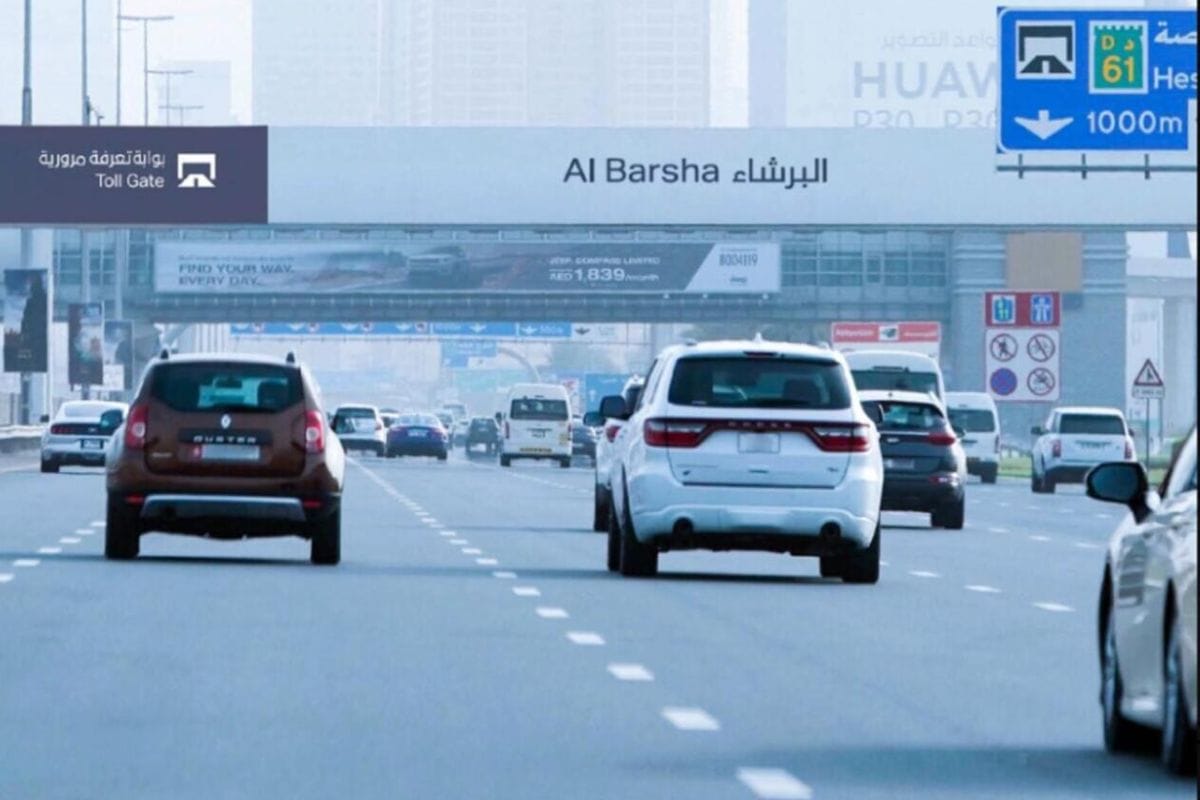Dubai: Are Higher Salik Prices on the Horizon to Alleviate Traffic Issues?

Dubai’s Toll System: Entering the Age of Dynamic Pricing to Combat Traffic Woes
As the vibrant city of Dubai continues to expand and evolve, so too do the strategies implemented to manage its bustling streets. The latest development on this front comes from Salik, the toll gate authority, which might soon introduce a dynamic pricing model to address the ever-growing issue of traffic congestion. This innovative approach, as announced by Ibrahim Alhaddad, the CEO of Salik, could revolutionize the way drivers navigate the city’s busy thoroughfares.
The Current Toll Structure and Its Shortcomings
Currently, drivers in Dubai are charged a flat toll fee of Dh4 when crossing Salik gates. However, Alhaddad voiced concerns that this static pricing model has lost its ability to effectively manage traffic flow, especially during peak hours when congestion is particularly severe. “The Dh4 toll rate doesn’t reflect the dynamic patterns of traffic we see every day in our rapidly growing city,” he remarked, hinting at the need for a more adaptable approach.
What is Dynamic Pricing?
Dynamic pricing, a concept already embraced by several metropolitan areas around the globe, involves adjusting toll rates based on real-time traffic patterns and overall demand. This could mean that tolls are lower during off-peak hours, incentivizing drivers to travel at these times, while rates may increase during high-traffic periods to discourage unnecessary road usage. Alhaddad explained, “This approach might include exemptions during off-peak hours and higher charges during peak times,” adding that such a system could streamline road usage and potentially lessen gridlock.
The advantages of dynamic pricing could be significant. Not only could it lead to a more even distribution of traffic throughout the day, but it could also encourage residents to explore alternative commuting options, such as public transportation.
The Road and Transport Authority’s Position
While dynamic pricing has been mentioned as a potential strategy by the Roads and Transport Authority (RTA) in Dubai, specific timelines for its implementation are still unclear. With the rising demand for solutions to the city’s congestion woes, it seems the RTA is taking its time to evaluate the strategy thoroughly.
Salik’s recent announcement regarding its Initial Public Offering (IPO) included references to this innovative pricing model as a key factor in reducing traffic congestion. The hope is that by balancing out demand through variable pricing, Dubai could enhance the overall driving experience and promote greater road safety.
Insights from the Investor Conference Call
During a recent Investor Conference Call, Maged Ibrahim, CFO of Salik, addressed concerns about the potential impact of April 2024’s unprecedented rainfall on the toll system. “Our infrastructure remains intact, and toll gates are operating normally,” he reassured stakeholders, providing a sense of stability in the wake of weather-related disturbances. The heavy rains had initially disrupted traffic patterns, but Ibrahim noted that demand surged thereafter, helping to offset any financial losses from the brief interruption. Following the Eid break, traffic patterns had successfully returned to normal, reflecting the robust adaptability of Dubai’s transportation networks.
Next Steps for Salik
Before dynamic pricing can become a reality on Dubai’s roads, Salik plans to comprehensively review the operational details and financial implications of the proposed model. This is a crucial step as the authority seeks approval from the Dubai Executive Council. The decision will not only reflect on the practicality of dynamic pricing but also demonstrate Dubai’s willingness to innovate in response to the transportation needs of its citizens.
The Bigger Picture
The potential implementation of dynamic pricing for tolls highlights a broader trend toward modernizing urban transportation methods across the globe. Major cities like London, San Francisco, and Singapore have already adopted strategies that utilize variable toll rates to alleviate congestion. As more urban areas experience increasing populations and traffic challenges, the emphasis on smart infrastructure and technology-driven solutions is likely to grow.
Conclusion
Dubai is at a critical juncture in refining its transportation systems for the future. The prospect of implementing dynamic pricing for Salik tolls reflects a forward-thinking approach to urban traffic management, aligning with global trends and innovative urban planning principles.
As the city continues to attract residents and tourists alike, efficient management of its urban infrastructure will remain paramount. Whether this new toll pricing approach becomes a reality or not, the dialogue surrounding it highlights Dubai’s commitment to ensuring a smoother, more efficient travel experience for all of its road users. Keeping in line with the ongoing evolution of the transportation landscape, the introduction of this dynamic pricing model could mark a significant step towards optimizing traffic flow and enhancing overall mobility in one of the world’s fastest-growing cities.
As we continue to track these developments, residents can remain hopeful that solutions like dynamic pricing may soon play a crucial role in shaping the future of driving in Dubai.







